
(a)
Interpretation:
Amino acid from Table 23.1 should be classified into each of the categories nonpolar v. polar.
Concept introduction:
Proteins are
They polymerize by peptide linkage to form dipeptide, oligopeptide and polypeptide molecules. Each peptide bond formation is a condensation reaction that occurs with the elimination of water molecule.
Answer to Problem 6SSC
Glycine, valine and phenylalanine are nonpolar amino acids and, serine, cysteine, lysine, glutamic acid, glutamine are polar amino acids.
Explanation of Solution
Polar amino acid is directed towards the outside of the protein because of the hydrophilic properties of side chain whereas the nonpolar amino acid is directed towards the inside of protein (R group repelled by water) because of the hydrophobic nature.
The given amino acids are: Glycine, Serine, Cysteine, Lysine, Glutamic acid, Glutamine, Valine and Phenylalanine.
The structure of Glutamine is:
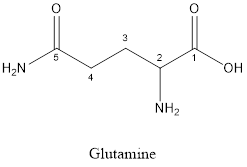
The structure of serine is:
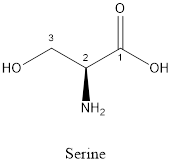
The structure of Cysteine is:
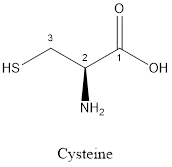
The structure of Lysine:
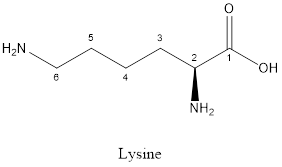
The structure of glutamic acid:
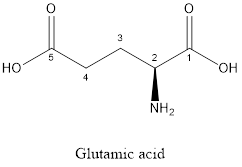
The structure of Glycine is:

The structure of valine is:
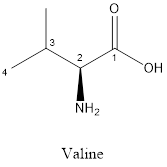
The structure of phenylalanine is:
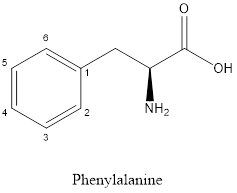
Glycine is nonpolar as it is neutral species; also nonpolar hydrogen is linked as shown below:
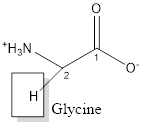
Valine is nonpolar as it is neutral species; also nonpolar group is linked as shown below:
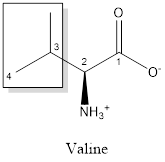
Serine is polar amino acid as it consists of polar R group:
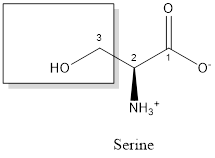
Cysteine is polar amino acid as it consists of polar R group:
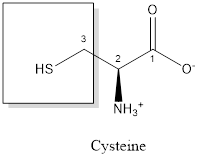
Glutamine is a polar amino acid as it consists of polar R group:
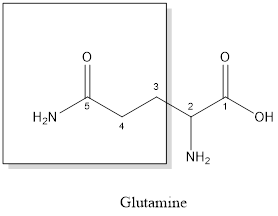
Lysine is a polar amino acid as it consists of polar R group:
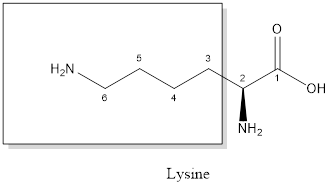
Glutamic acid is a polar amino acid as it consists of polar R group:
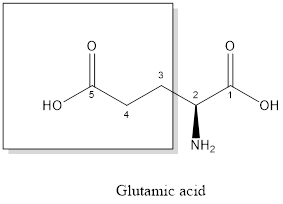
Phenylalanine is nonpolar as it is neutral species; also nonpolar group is linked as shown below:
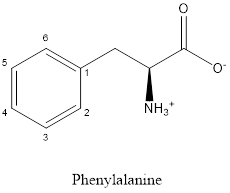
Therefore; glycine, valine and phenylalanine are nonpolar amino acids and, serine, cysteine, lysine, glutamic acid, glutamine are polar amino acids.
(b)
Interpretation:
Amino acid from Table 23.1 should be classified into each of the categories aromatic v. aliphatic.
Concept introduction:
Proteins are polymeric biomolecules which are formed by the polymerisation of amino acids. Amino acids are the organic molecules with
They polymerize by peptide linkage to form dipeptide, oligopeptide and polypeptide molecules. Each peptide bond formation is a condensation reaction that occurs with the elimination of water molecule.
Answer to Problem 6SSC
The amino acids which are aliphatic in nature are glycine, serine, cysteine, lysine, glutamic acid, glutamine, valine whereas the amino acid which is aromatic.
Explanation of Solution
A cyclic ring structure which contains carbon atoms and hydrogen atoms is known as aromatic ring and the compound which has aromatic ring is known as
The compound which consists of carbon and hydrogen linked with each other either in a straight chain, branched chain and non-aromatic rings is known as aliphatic compounds.
The given amino acids are: Glycine, Serine, Cysteine, Lysine, Glutamic acid, Glutamine, Valine and Phenylalanine.
The structure of Glutamine is:
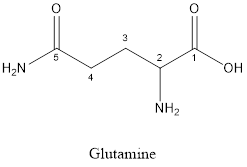
The structure of serine is:
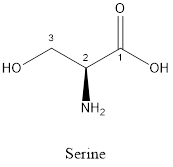
The structure of Cysteine is:
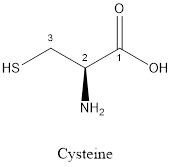
The structure of Lysine:
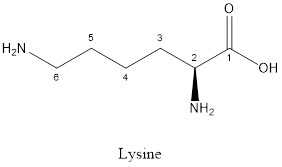
The structure of glutamic acid:
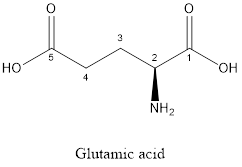
The structure of Glycine is:
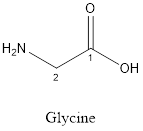
The structure of valine is:
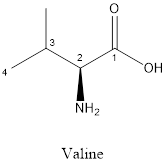
The structure of phenylalanine is:
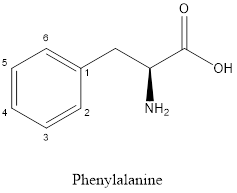
According to above structures, the amino acids which are aliphatic in nature are glycine, serine, cysteine, lysine, glutamic acid, glutamine, valine as these amino acids contain carbon and hydrogen bonds (hydrocarbon) whereas the amino acid which is aromatic is phenylalanine as it contains aromatic ring in its side chain.
(c)
Interpretation:
Amino acid from Table 23.1 should be classified into each of the categories acidic v. basic.
Concept introduction:
Proteins are polymeric biomolecules which are formed by the polymerisation of amino acids. Amino acids are the organic molecules with
They polymerize by peptide linkage to form dipeptide, oligopeptide and polypeptide molecules. Each peptide bond formation is a condensation reaction that occurs with the elimination of water molecule.
Answer to Problem 6SSC
Lysine and Glutamic acid is basic and acidic amino acid. The remaining amino acids are neutral.
Explanation of Solution
The amino acids which contain R group as a
The amino acids which contain R group as a
The given amino acids are: Glycine, Serine, Cysteine, Lysine, Glutamic acid, Glutamine, Valine and Phenylalanine.
The structure of Glutamine is:
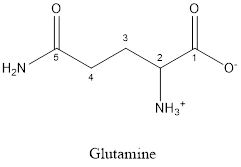
Glutamine is neither acidic nor basic as the side chain of glutamine is uncharged (polar R group). Thus, glutamine is a neutral amino acid.
The structure of serine is:
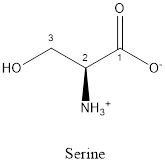
Serine is neither acidic nor basic as the side chain of serine is uncharged (polar R group). Thus, serine is a neutral amino acid.
The structure of Cysteine is:
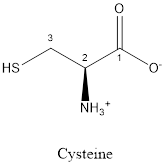
Cysteine is neither acidic nor basic as the side chain of cysteine is uncharged (polar R group). Thus, cysteine is a neutral amino acid.
The structure of Lysine:
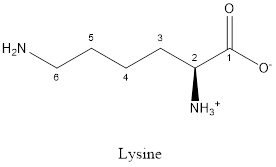
Lysine is basic in nature as the side chain of lysine consists of amine group. Thus, lysine is a basic amino acid.
The structure of glutamic acid:
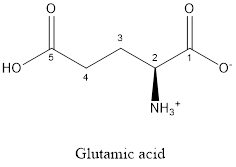
Glutamic acid is acidic in nature as the side chain of glutamic acid consists of carboxylic group. Thus, Glutamic acid is an acidic amino acid.
The structure of Glycine is:
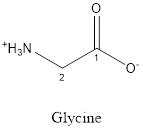
Glycine is neither acidic nor basic as the side chain of glycine is uncharged (polar R group). Thus, glycine is a neutral amino acid.
The structure of valine is:
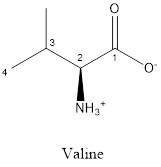
Valine is neither acidic nor basic as the side chain of valine is uncharged (polar R group). Thus, valine is a neutral amino acid.
The structure of phenylalanine is:
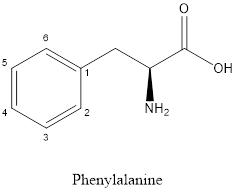
Phenylalanine is neither acidic nor basic as the side chain of phenylalanine is uncharged (polar R group). Thus, phenylalanine is a neutral amino acid.
Chapter 23 Solutions
Glencoe Chemistry: Matter and Change, Student Edition
Additional Science Textbook Solutions
Organic Chemistry (8th Edition)
Genetic Analysis: An Integrated Approach (3rd Edition)
Chemistry: Structure and Properties (2nd Edition)
Applications and Investigations in Earth Science (9th Edition)
Campbell Essential Biology (7th Edition)
Biology: Life on Earth (11th Edition)
- 2. Calculate the branching ratio of the reaction of the methyl peroxy radical with either HO, NO 298K) (note: rate constant can be found in the tropospheric chemistry ppt CH,O,+NO-HCHO+HO, + NO, CH₂O+HO, CH₂00H +0₂ when the concentration of hydroperoxyl radical is DH01-1.5 x 10 molecules and the nitrogen oxide maxing ratio of 10 ppb when the concentration of hydroperoxyl radicalis [H0] +1.5x10 molecules cm" and the nitrogen oxide mixing ratio of 30 p Under which condition do you expect more formaldehyde to be produced and whyarrow_forwardIndicate the product of the reaction of benzene with 1-chloro-2,2-dimethylpropane in the presence of AlCl3.arrow_forwardIn what position will N-(4-methylphenyl)acetamide be nitrated and what will the compound be called.arrow_forward
- DATA: Standard Concentration (caffeine) mg/L Absorbance Reading 10 0.322 20 0.697 40 1.535 60 2.520 80 3.100arrow_forwardIn what position will p-Toluidine be nitrated and what will the compound be called.arrow_forwardIn what position will 4-methylbenzonitrile be nitrated and what will the compound be called.arrow_forward
- In what position will benzenesulfonic acid be nitrated?arrow_forwardIf compound A reacts with an excess of methyl iodide and then heated with aqueous Ag₂O, indicate only the major products obtained. Draw their formulas. A Harrow_forwardExplanation Check 1:01AM Done 110 Functional Groups Identifying and drawing hemiacetals and acetals In the drawing area below, create a hemiacetal with 1 ethoxy group, 1 propoxy group, and a total of 9 carbon atoms. Click and drag to start drawing a structure. ✓ $ 2025 McGraw Hill LLC. All Rights Reserved. Terms of Use Sarrow_forward
- Write the systematic name of each organic molecule: CI structure CI CI Explanation CI ठ CI Check B ☐ 188 F1 80 name F2 F3 F4 F5 F6 60 F7 2arrow_forwardWrite the systematic name of each organic molecule: structure i HO OH Explanation Check name ☐ ☐arrow_forwardX 5 Check the box under each molecule that has a total of five ẞ hydrogens. If none of the molecules fit this description, check the box underneath the table. CI Br Br Br 0 None of these molecules have a total of five ẞ hydrogens. Explanation Check esc F1 F2 tab caps lock fn Q @2 A W # 3 OH O OH HO © 2025 McGraw Hill LLC. All Rights Reserved. Terms of Use | Privacy Center | Accessibility IK F7 F7 F8 TA F9 F10 & 6 28 * ( > 7 8 9 0 80 F3 O F4 KKO F5 F6 S 64 $ D % 25 R T Y U பட F G H O J K L Z X C V B N M H control option command P H F11 F12 + || { [ command optionarrow_forward
 ChemistryChemistryISBN:9781305957404Author:Steven S. Zumdahl, Susan A. Zumdahl, Donald J. DeCostePublisher:Cengage Learning
ChemistryChemistryISBN:9781305957404Author:Steven S. Zumdahl, Susan A. Zumdahl, Donald J. DeCostePublisher:Cengage Learning ChemistryChemistryISBN:9781259911156Author:Raymond Chang Dr., Jason Overby ProfessorPublisher:McGraw-Hill Education
ChemistryChemistryISBN:9781259911156Author:Raymond Chang Dr., Jason Overby ProfessorPublisher:McGraw-Hill Education Principles of Instrumental AnalysisChemistryISBN:9781305577213Author:Douglas A. Skoog, F. James Holler, Stanley R. CrouchPublisher:Cengage Learning
Principles of Instrumental AnalysisChemistryISBN:9781305577213Author:Douglas A. Skoog, F. James Holler, Stanley R. CrouchPublisher:Cengage Learning Organic ChemistryChemistryISBN:9780078021558Author:Janice Gorzynski Smith Dr.Publisher:McGraw-Hill Education
Organic ChemistryChemistryISBN:9780078021558Author:Janice Gorzynski Smith Dr.Publisher:McGraw-Hill Education Chemistry: Principles and ReactionsChemistryISBN:9781305079373Author:William L. Masterton, Cecile N. HurleyPublisher:Cengage Learning
Chemistry: Principles and ReactionsChemistryISBN:9781305079373Author:William L. Masterton, Cecile N. HurleyPublisher:Cengage Learning Elementary Principles of Chemical Processes, Bind...ChemistryISBN:9781118431221Author:Richard M. Felder, Ronald W. Rousseau, Lisa G. BullardPublisher:WILEY
Elementary Principles of Chemical Processes, Bind...ChemistryISBN:9781118431221Author:Richard M. Felder, Ronald W. Rousseau, Lisa G. BullardPublisher:WILEY





